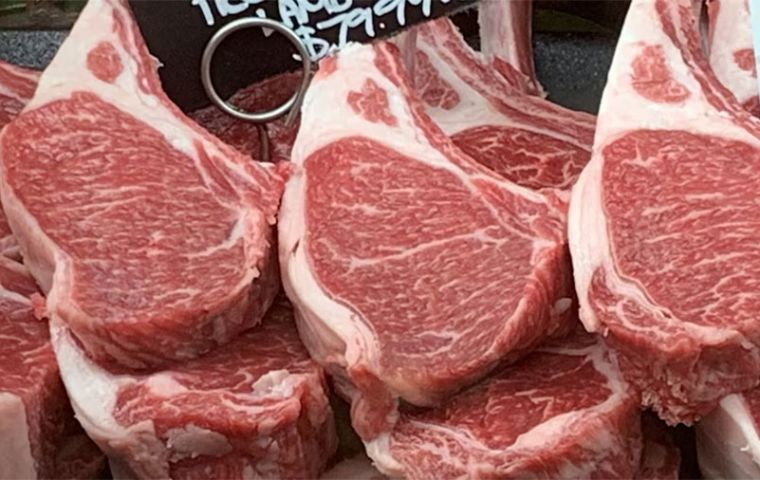MercoPress. South Atlantic News Agency
Australia's flock growth has choked the world market for ovine meat
 “Australia has had several very good seasons over the past few years, which means that the sheep flock has reached 78.75 million head – the largest since 2007.”
“Australia has had several very good seasons over the past few years, which means that the sheep flock has reached 78.75 million head – the largest since 2007.” Australia is reporting a record sheep flock, 78 million head, which means the price of mutton has collapsed, as low as 80 US cents per kilo, and many farmers are culling or not mating their ewes to cut costs and implement a workable sustainable food/flock relation ahead of the dry season.
Tim Jackson from the Meat and Livestock Australia, MLA said that “Australia has had several very good seasons over the past few years, which means that the sheep flock has reached 78.75 million head – the largest since 2007.”
Australia’s sheep flock is expected to expand 23% from the 100-year low in 2020, stats from MLA showed. Consequently, the oversupply of sheep sent prices of the livestock lower, marking a reversal of the windfall that farmers enjoyed from record mutton prices three years back.
Driving the large sheep flock increase were three years of above average rainfall in Australia’s sheep regions, New South Wales and Victoria.
“The more it rained and the longer the market stayed buoyant, the more it drove producers to retain sheep they’d otherwise turn off, and as a result numbers continued to grow,” chairman of Sheep Producers Australia, Andrew Spencer, said referring to ranchers keeping more sheep on-farm instead of fattening them and sending the livestock to slaughterhouses and markets.
“Farmers have (since) seen a massive fall in profitability … Many sheep may not have a market which could lead to farmers destroying animals,” Steve McGuire, vice president of WAFarmers. He added that farmers would much rather give the animals away than cull them, but there hasn’t been many takers for the free sheep.
To make things worse weather conditions have taken a turn for the worse in the coming year. The Australian Bureau of Meteorology recently had its driest September on record, and the parched weather is not about to let up. The bureau in November warned El Niño will continue and that a strong positive Indian Ocean Dipole (IOD) event is likely — suggesting the next few months will continue to be relatively hot and dry.
Australia is the world's leading producer and exporter of sheep meat, and the oversupply has placed downward pressure on global wholesale prices.
Australia exported a record volume of ovine meat in October, “so the meat is starting to move, it is just a big backlog to clear,” McGuire said. He expects consumers both within Australia and overseas to continue to see more dips in mutton price.
That said, some farmers are considering not mating their ewes to reduce costs, McGuire added. This could lead to a fall in young sheep numbers which may shift the sheep market landscape from oversupply to undersupply quite rapidly.




Top Comments
Disclaimer & comment rulesCommenting for this story is now closed.
If you have a Facebook account, become a fan and comment on our Facebook Page!